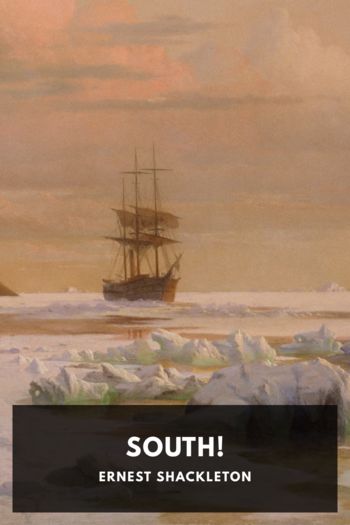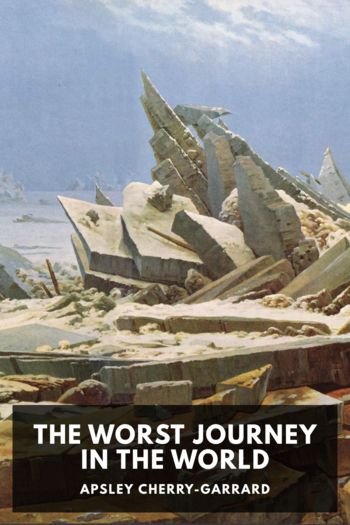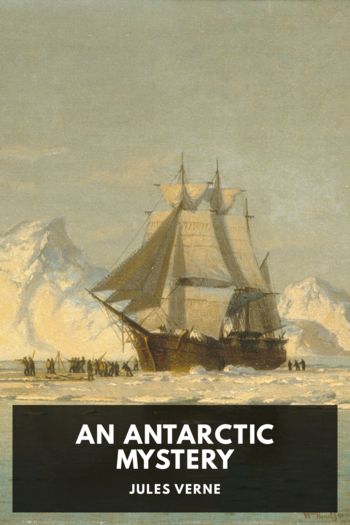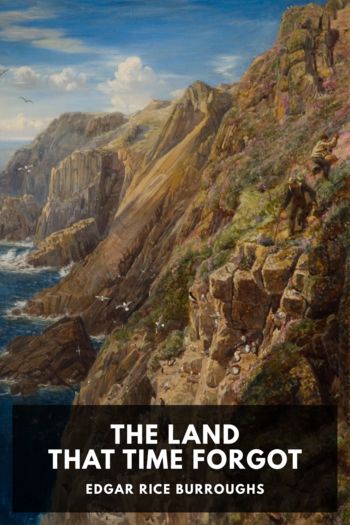South!, Ernest Shackleton [good books to read in english TXT] 📗

- Author: Ernest Shackleton
Book online «South!, Ernest Shackleton [good books to read in english TXT] 📗». Author Ernest Shackleton
A wonderful mirage of the Fata Morgana type was visible on August 20. The day was clear and bright, with a blue sky overhead and some rime aloft.
“The distant pack is thrown up into towering barrier-like cliffs, which are reflected in blue lakes and lanes of water at their base. Great white and golden cities of Oriental appearance at close intervals along these clifftops indicate distant bergs, some not previously known to us. Floating above these are wavering violet and creamy lines of still more remote bergs and pack. The lines rise and fall, tremble, dissipate, and reappear in an endless transformation scene. The southern pack and bergs, catching the sun’s rays, are golden, but to the north the ice-masses are purple. Here the bergs assume changing forms, first a castle, then a balloon just clear of the horizon, that changes swiftly into an immense mushroom, a mosque, or a cathedral. The principal characteristic is the vertical lengthening of the object, a small pressure-ridge being given the appearance of a line of battlements or towering cliffs. The mirage is produced by refraction and is intensified by the columns of comparatively warm air rising from several cracks and leads that have opened eight to twenty miles away north and south.”
We noticed this day that a considerable change had taken place in our position relative to the Rampart Berg. It appeared that a big lead had opened and that there had been some differential movement of the pack. The opening movement might presage renewed pressure. A few hours later the dog teams, returning from exercise, crossed a narrow crack that had appeared ahead of the ship. This crack opened quickly to 60 ft. and would have given us trouble if the dogs had been left on the wrong side. It closed on the 25th and pressure followed in its neighbourhood.
On August 24 we were two miles north of the latitude of Morell’s farthest south, and over 10° of longitude, or more than 200 miles, west of his position. From the masthead no land could be seen within twenty miles, and no land of over 500 ft. altitude could have escaped observation on our side of long. 52° W. A sounding of 1,900 fathoms on August 25 was further evidence of the nonexistence of New South Greenland. There was some movement of the ice near the ship during the concluding days of the month. All hands were called out in the night of August 26, sounds of pressure having been followed by the cracking of the ice alongside the ship, but the trouble did not develop immediately. Late on the night of the 31st the ice began to work ahead of the ship and along the port side. Creaking and groaning of timbers, accompanied by loud snapping sounds fore and aft, told their story of strain. The pressure continued during the following day, beams and deck planks occasionally buckling to the strain. The ponderous floes were grinding against each other under the influence of wind and current, and our ship seemed to occupy for the time being an undesirable position near the centre of the disturbance; but she resisted staunchly and showed no sign of water in the bilges, although she had not been pumped out for six months. The pack extended to the horizon in every direction. I calculated that we were 250 miles from the nearest known land to the westward, and more than 500 miles from the nearest outpost of civilization, Wilhelmina Bay. I hoped we would not have to undertake a march across the moving ice-fields. The Endurance we knew to be stout and true; but no ship ever built by man could live if taken fairly in the grip of the floes and prevented from rising to the surface of the grinding ice. These were anxious days. In the early morning of September 2 the ship jumped and shook to the accompaniment of cracks and groans, and some of the men who had been in the berths hurried on deck. The pressure eased a little later in the day, when the ice on the port side broke away from the ship to just abaft the main rigging. The Endurance was still held aft and at the rudder, and a large mass of ice could be seen adhering to the port bow, rising to within three feet of the surface. I wondered if this ice had got its grip by piercing the sheathing.
IV Loss of the EnduranceThe ice did not trouble us again seriously until the end of September, though during the whole month the floes were seldom entirely without movement. The roar of pressure would come to us across the otherwise silent ice-fields, and bring with it a threat and a warning. Watching from the crow’s-nest, we could see sometimes the formation of pressure-ridges. The sunshine glittered on newly riven ice-surfaces as the masses of shattered floe rose and fell away from the line of pressure. The area of disturbance would advance towards us, recede, and advance again. The routine of work and play on the Endurance





Comments (0)